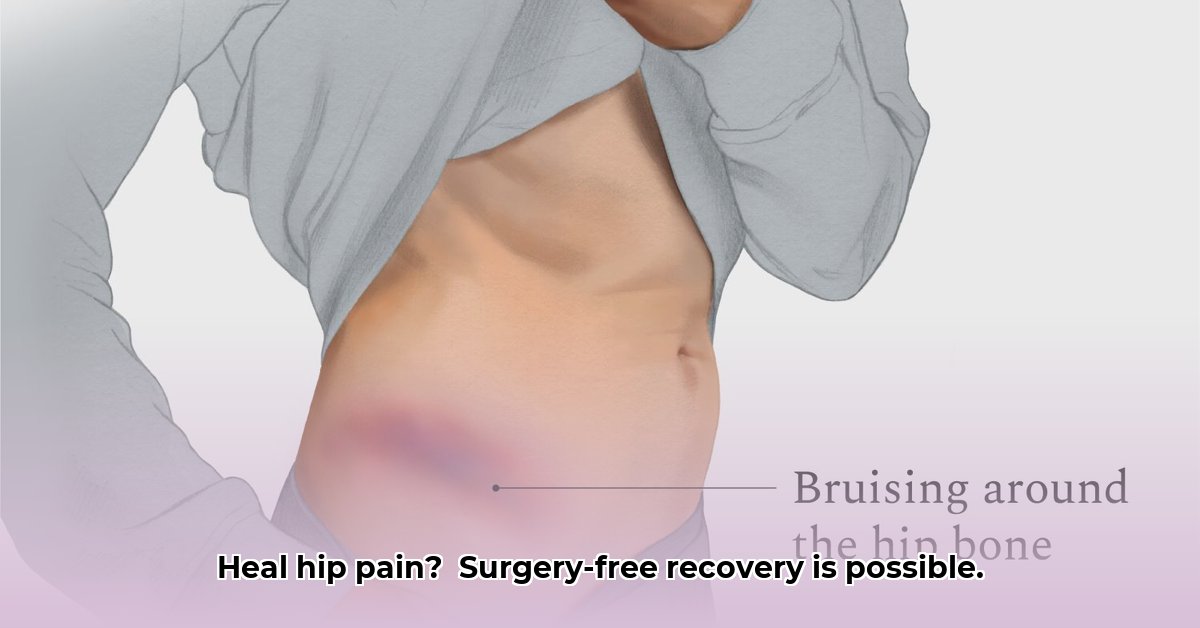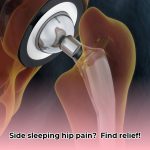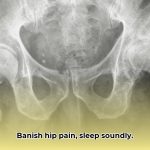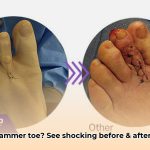Hip pain can significantly impact your daily life. If you suspect a hip labral tear, remember that surgery isn’t always the only option. Many individuals successfully recover without it. This guide details non-surgical approaches that can help you regain mobility and reduce pain. We’ll cover exercises, therapies, and lifestyle adjustments to help you embark on your journey to recovery without complex medical terms.
Understanding Hip Labral Tears and Exploring Non-Surgical Options
A hip labral tear involves damage to the labrum, the cartilage ring that cushions your hip joint. This injury can cause pain and discomfort. Recovery without surgery is possible. Several non-surgical approaches can help you manage the pain and improve hip function. Let’s explore these options to empower you in making informed decisions.
Exploring Your Non-Surgical Treatment Choices for Hip Pain Relief
Many effective non-surgical approaches can treat hip labral tears. Success depends on the tear severity and your overall health. Which treatment will you consider?
1. Physical Therapy: A Foundation for Hip Health and Stability
Physical therapy is often the initial recommendation—a cornerstone of hip labral tear treatment. A physical therapist creates a custom program focusing on strengthening hip-supporting muscles and improving flexibility. You’ll also learn movements to minimize joint stress. Recovery time is usually shorter than surgery, and the cost varies based on insurance and treatment sessions. However, commitment to regular sessions and home exercises is crucial. Is consistent effort something you can commit to?
2. Medication: Managing Pain and Inflammation to Improve Mobility
Over-the-counter pain relievers (ibuprofen, naproxen) can reduce pain and inflammation. Your doctor may suggest stronger prescription medications (NSAIDs, corticosteroids) if needed. However, these only manage pain temporarily and don’t address the underlying problem. Long-term use can lead to side effects such as gastrointestinal issues or cartilage damage. This option is generally more affordable.
3. Platelet-Rich Plasma (PRP) Injections: Harnessing Your Body’s Healing Potential
Platelet-Rich Plasma (PRP) therapy involves injecting concentrated platelets from your blood into your hip to accelerate healing. This shows promise, but more research is needed. Risks are generally minimal, but results vary. It’s a moderately priced option with a relatively short recovery. Platelets contain growth factors that can aid tissue repair. What are the long-term implications of PRP injections?
4. Stem Cell Injections: Regenerating Damaged Tissue Through Innovative Therapy
Stem cell injections aim to stimulate tissue regeneration in your hip. This is a newer approach with encouraging initial results. Long-term effectiveness and cost-effectiveness are still under investigation. Side effects are rare. Stem cell injections are a more expensive option with variable recovery times. The source of stem cells can vary, including bone marrow or adipose tissue.
5. Activity Modification:
Modifying activities to avoid aggravating the hip joint is crucial. This might involve reducing participation in high-impact sports or making changes to daily routines to minimize stress on the hip.
6. Assistive Devices:
Using assistive devices like crutches or a cane can help reduce weight-bearing on the affected hip, providing support and reducing pain during the healing process.
Making the Right Decision: A Personalized Approach for Your Hip
Choosing the best treatment requires a partnership with your doctor, who will assess the tear severity, your activity level, your overall health, and preferences. Asking questions is essential. The comparison table can help guide your conversation about the best hip treatment plan.
| Treatment | Advantages | Potential Drawbacks |
|---|---|---|
| Physical Therapy | Often effective, low risk, relatively inexpensive | Requires commitment; may not work for all tears |
| Medications | Easily accessible, relatively inexpensive | Only addresses pain; potential side effects |
| PRP Injections | Minimally invasive, may speed up healing | Effectiveness still being studied; moderate cost |
| Stem Cell Injections | Potential for significant tissue repair | High cost; long-term data still limited |
| Activity Modification | Reduces stress on the hip joint | May require temporary lifestyle adjustments |
| Assistive Devices | Provides support and reduces weight-bearing | Can be inconvenient for some individuals |
Sample Physical Therapy Exercises for Hip Labral Tear (Consult Your PT First!)
Remember: Consult a physical therapist before starting exercises. Improper form can worsen the injury. Your therapist will create a personalized routine.
1. Hip Flexor Stretch: Kneel on one knee, placing the other foot flat on the floor in front. Lean forward to feel a stretch in the front of your hip. Hold the stretch for 30 seconds. Repeat several times.
2. Glute Bridge: Lie on your back with your knees bent, feet flat. Squeeze your buttock muscles and lift your hips. Hold for a few seconds, then lower. Repeat 10-15 times.
3. Clamshell: Lie on your side with your knees bent and stacked. Keep your feet together and slowly lift your top knee. Repeat 10-15 times.
4. Hip Abduction: Stand with feet hip-width apart. Slowly lift one leg out to the side, keeping your knee straight. Lower your leg back to the starting position. Repeat 10-15 times on each leg. You can use a resistance band around your ankles for added challenge.
5. Quadruped Hip Extension: Start on your hands and knees. Keeping your knee bent, lift one leg behind you, squeezing your glutes. Lower your leg back to the starting position. Repeat 10-15 times on each leg.
Lifestyle Changes for Long-Term Hip Health
Your lifestyle impacts your recovery. Consider these adjustments:
- Activity Modification: Avoid high-impact activities that stress your hip. Gradually increase activity as your pain improves.
- Posture Improvement: Maintaining good posture reduces strain on your hip joint.
- Weight Management: Excess weight adds extra stress to your hips.
- Proper Warm-up: Before any physical activity, engage in a thorough warm-up to prepare the hip joint and surrounding muscles.
- Ergonomic Assessment: Evaluate your workspace and daily activities to identify potential sources of hip strain. Adjust your setup to promote proper alignment and reduce stress.
When Is Hip Surgery Necessary?
While many people recover without surgery, some cases require it. Surgery may be necessary for significant tears, if non-surgical treatments haven’t worked, or if there are other issues affecting your hip joint, such as hip dysplasia or femoroacetabular impingement (FAI). Your orthopedic surgeon can advise whether surgery is the best option.
Your Path to Hip Recovery: A Collaborative Journey
Open communication with your healthcare team is invaluable, and lifestyle modifications are powerful tools for recovery. Don’t hesitate to ask questions and take an active role in your healing. Remember that physical therapy and lifestyle modifications are powerful tools in your recovery journey. After all, who can advocate for your well-being better than you?
How to Choose Between Hip Labral Tear Surgery and Conservative Treatment
Key Takeaways:
- Non-surgical options are often the first line of defense for hip labral tears.
- Success with non-surgical treatment depends on factors like tear severity and your activity level.
- Physical therapy is crucial for both non-surgical and post-surgical recovery.
- Surgery may be necessary for significant tears or those not responding to conservative care.
- A thorough assessment by a medical professional is essential to determine the best treatment path.
Understanding Your Hip Labral Tear: What You Need to Know
A hip labral tear damages the labrum—a cartilage ring that stabilizes and cushions your hip joint. Tears can range from minor to severe. Common symptoms include pain, clicking, catching, or locking in the hip. Many tears can heal without surgery. The severity of the tear often dictates the best course of action.
Non-Surgical Treatment Options: Charting Your Healing Course
Before considering surgery, explore conservative strategies that focus on reducing pain and improving hip function. The decision of how to choose between hip labral tear surgery and conservative treatment should be made with your doctor.
- Physical Therapy: Physical therapy is essential for strengthening hip muscles, improving flexibility, and improving your hip’s stability. A physical therapist will create a personalized exercise program. Expect consistent progress, but be patient.
- Medication: Over-the-counter pain relievers (ibuprofen or acetaminophen) can help manage pain and inflammation. Your doctor might also prescribe stronger medications in some cases.
- Injections: Platelet-rich plasma (PRP) and stem cell injections are newer options aimed at stimulating healing within the joint. However, success rates vary. Corticosteroid injections can provide temporary pain relief but are generally not recommended for long-term use due to potential side effects.
Assessing Your Risks: Making Informed Choices About Your Hip
Choosing between surgery and conservative treatment requires considering your situation. Your doctor can provide a proper diagnosis and help you decide. Non-surgical treatment is more effective for minor to moderate tears and manageable pain.
| Factor | Conservative Treatment | Surgery |
|---|---|---|
| Tear Severity | Effective for minor to moderate tears. | Necessary for severe, complex tears. |
| Pain Level | Best for manageable pain. | Suitable for severe, persistent pain. |
- Unlock Young Doctors’ Work-Life Balance: Actionable Strategies Now - December 2, 2025
- Unlock Life Harmony: Work-Life Integration Guide - November 30, 2025
- Unlock Work-Life Harmony:Your Guide to Integration - November 27, 2025
















